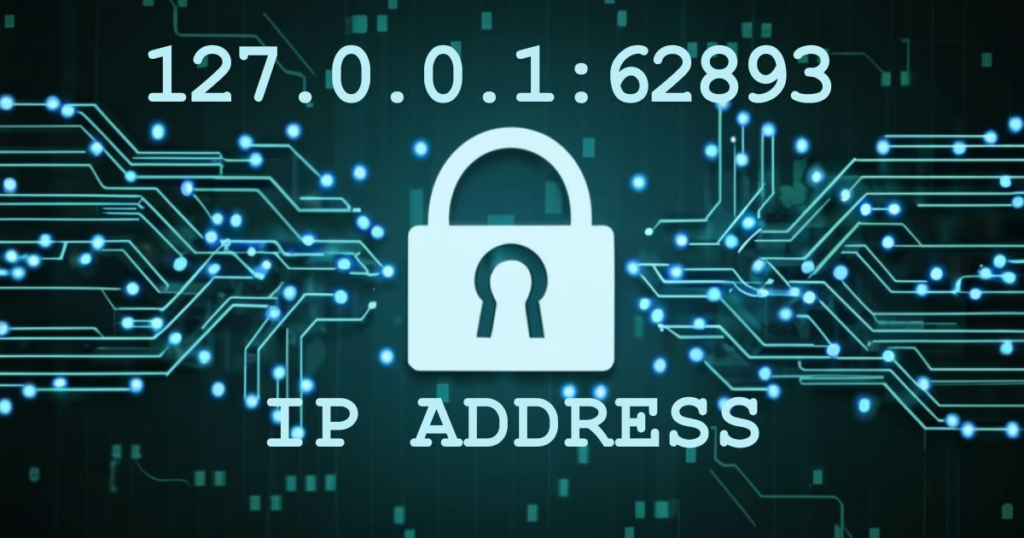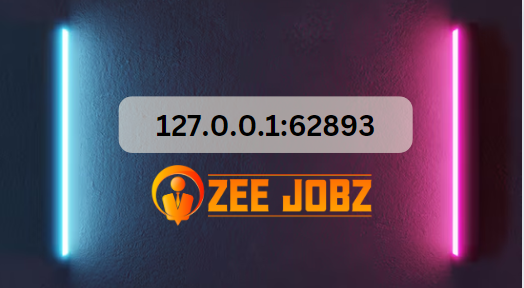Introduction
The international network of networks and computer communications contains many terms, addresses, and numbers that often seem complex and intimidating. One such address that usually comes up in discussions about configurations and development environments of nearby communities is “127.0.0.1:62893.” This article aims to demystify this trade and explain its components, meaning, and packages. If you leave this entire guide, you will get easy data about 127.0.0.1:62893 represents how far it is used in many contexts of network development and software applications.
The basics of IP addresses
Before diving into the specifics 127.0.0.1:62893, it is very important to recognize the basics of IP addresses. The IP (Internet Protocol) it deals with is a specific identifier assigned to each device connected to the community. IP addresses facilitate conversations between devices, allowing information to be sent and retrieved as it should be. IP addresses are available in primary variants: IPv4 and IPv6.

IPv4 addresses consist of 4 units of numbers separated by duration (e.g., 192.168.1.1), while IPv6 addresses are longer and written in hexadecimal, separated by colons (e.g., 2001:0db8:85a3:0000: 0000:8a2e: 03470:73 The IPv4 address space is limited to approximately 4. Three billion exact addresses, mainly due to the development of IPv6, which provides a massively large address space.
Localhost concept
The “localhost” period is a unique hostname that refers to the loopback contract in the computer’s network configuration. On maximum systems, localhost is mapped to an IP cope with 127.0.0.1:62893. This loopback solution establishes a connection with the same device or tool, effectively developing an internal community within the tool itself. This internal network allows builders to manage and debug community programs without needing an external community connection.
Understanding port numbers
A port range is an endpoint in a network connection that identifies a specific access or provider on a device. When facts are transmitted over the net, they are miles sent to a particular IP that balances and transmits a huge variety. Port numbers range from 0 to 65535 and are divided into three instructions: well-known ports (0-1023), registered ports (1024-49151), and dynamic or non-public ports (49152-65535).
Well-described ports are reserved for well-known menus and protocols (e.g., HTTP uses port 80, HTTPS uses port 443, and FTP uses port 21). Registered ports are assigned to unique services and applications using the useful Internet Assigned Numbers Authority (IANA) resource. Dynamic or personal ports are used for short or custom functions and regular programs that require specific port numbers for male or female instances or instructions.
When a developer runs a web server, database server, or other community company on their local machine, they usually bind a service with a loopback address (127.0.Zero.1) and assign a unique port range (e.g., 62893) to avoid conflicts with different services. This setup allows more than one service to run concurrently on the same tool, each accessible through an amazing array of ports.
Use cases for 127.0.0.1:62893
Local development and testing
One of the most common use cases for 127.0.0.1:62893 is neighborhood development and environment testing. Developers regularly run network servers, database servers, and various services on their neighboring computers to develop and control programs. By using a loop solution and a very specific palette of ports, developers can ensure that their services are not interacting and can be accessed independently.
For example, a developer can run a web server at 127.0.Zero.1:3000 and a database server at 127.0.0.1:62893:62893. This setting allows the developer to access the web tool via
127.0.0.1:62893:3000 and connect to the database via the loopback address and port range 62893.
Configuring and using 127.0.0.1:62893
To use the address 127.0.0.1:62893, you want to configure the application or service to bind to the loopback contract and port variant specified. This configuration procedure varies depending on the software and platform you are using. Here are some well-known steps to configure an internet server to use 127.0.0.1:62893:62893:
- Select a web server: Select a web server application (e.g., Apache, Nginx, Node.Js) to run near your computer.
- Modify configuration files: Modify the configuration documents for your preferred Internet server to bind to the loopback and port number 62893. This usually involves placing the pay attention command or its equivalent in the configuration file.
- Connection test: Open an Internet browser and go to 127.0.0.1:62893 to confirm that the Internet server is running and accessible.
Common problems and troubleshooting

While using 127.0.0.1:62893 is usually straightforward, you may encounter a few unusual issues that require troubleshooting. Here are some capacity issues and their solutions:
Conflicts in ports
If every other application is already using every other application is already using the desired wide range of ports (e.g., 62893), you may encounter a port problem. To solve this problem, choose a special range of ports in the dynamic or personal range and replace your software configuration.
Firewall restrictions
Firewalls for your neighboring computer may block connections to positive ports, preventing access to your tool. Ensure your firewall settings allow connections to the desired port range (e.g., 62893) on the loopback address.
Application errors
If your software is not configured correctly or contains errors, it cannot bind to the required range and port range. Check your tool’s logs and configuration documents for any error messages or misconfigurations and correct them as needed.
Advanced topics and considerations
IPv6 Loopback address
While 127.Zero.Zero.1 is a loopback for IPv4, and the equivalent for IPv6 is :1. If you’re working with IPv6 networks or packets, you can configure your offers to bind to an IPv6 loopback address and a specific port range.
Load Balancing and Clustering
In more complicated environments, enforcing load balancing or clustering may be necessary to distribute visitors across your application multiple times. This regularly involves using a combination of loopback addresses, port numbers, and community interfaces to ensure efficient and reliable operation.
Best security practices
It’s important to take incredible safeguards to protect your equipment and information when using loopback addresses and port numbers for local improvements and attempts. This includes using robust authentication mechanisms, keeping your software up-to-date, and monitoring suspicious activity.
Use of 127.0.0.1:62893 in modern development
In the current update, addresses like 127 are used.Zero.0.1:62893 has expanded beyond simple testing and embodies modern development practices. For example, developers regularly use containerization tools like Docker to create remote environments for browsing their programs. Each box can bind to a loopback address with exact port numbers, allowing more than one instance of packages to run concurrently on an identical host system. This setting is particularly beneficial in microservices where different services want to successfully communicate with each exception without the risk of port conflicts.
The Role of 127.0.0.1:62893 in Cybersecurity
From a cybersecurity perspective, characterizing loopback addresses and port numbers is key to protecting systems from capability compromises. Cyber attackers often exploit open ports and insecure offers on neighboring computers. By binding sensitive offers to 127.Zero.Zero.1 and using unknown port numbers such as 62893, administrators can reduce attacks and limit exposure to external threats. This exercise, in conjunction with regular protection audits and strong firewall configurations, complements the overall security posture of the system.
Educational Use 127.0.0.1:62893

Educational institutions and packages regularly use 127.0.0.1:62893 to teach network requirements and development practices. Students can install their servers and packages on surrounding machines, experiment with specific configurations, and learn how different components interact. This hands-on learning technique reinforces theoretical knowledge and prepares students for real-world scenarios where they will want to configure and troubleshoot network packages.
Future trends and innovations
Looking ahead, it is likely that using addresses like 127.0.0.1:62893 will correspond to improvements in generation. The evolving developments, together with aspect computing and the Internet of Things (IoT), would require new strategies for local community configurations. Devices at the network’s edge will want to run near services successfully, often relying on loopback addresses and specific port numbers for conversation and statistics processing. These trends will further emphasize the importance of expertise and effective use of surrounding community configurations.
Conclusion: Strength 127.0.0.1:62893
Cope with 127.0.0.1:62893 introduces the performance and flexibility of ambient network configurations, enabling network designers and administrators to create isolated environments for improvement, testing, and troubleshooting. If you know the importance of loopback processing, port numbers, and their various programs, you can use this performance to improve your workflows and your laptop’s network information.



